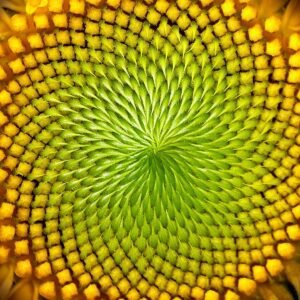The curious overlap between fairy folklore and UFO encounters presents a captivating exploration of human belief systems. Many cultures have long whispered stories of mysterious beings, from the enchanting fairies of ancient Europe to the enigmatic UFOs in modern sighting reports. This interplay of mythology and reported phenomena reveals intriguing parallels that stretch across centuries and disciplines.
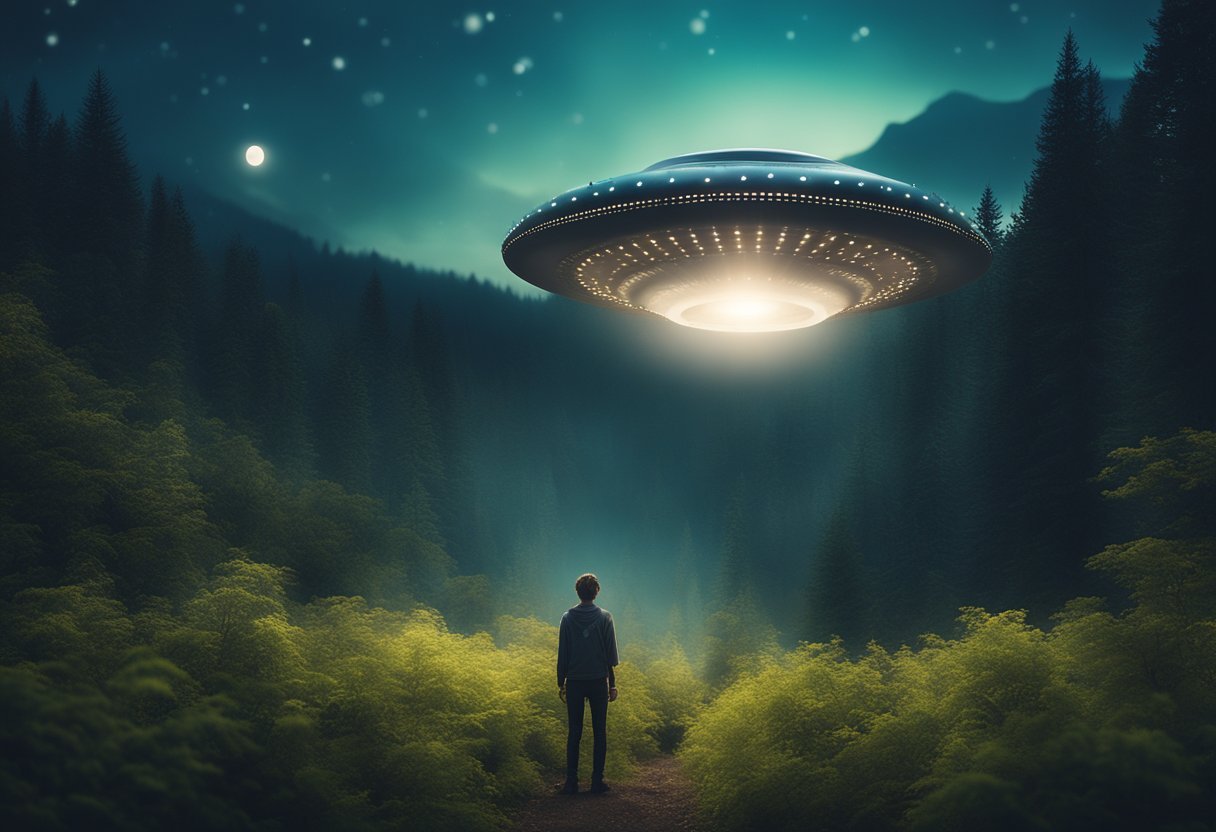
The intersection of these beliefs offers insights into how societal fears and hopes shape our interpretation of the unknown. Fairy lore and UFO sightings both reflect the timeless human quest for understanding the enigmatic and supernatural. These stories adapt and transform through time, demonstrating how cultural narratives evolve alongside technological and scientific advancements.
By examining these similarities, the article seeks to bridge historical anecdotes with contemporary belief, allowing readers to appreciate how past and present intermingle in the collective human psyche. This exploration not only offers a window into storytelling traditions but also challenges us to reflect on the enduring mysteries of our world.
Key Takeaways
- Similarities exist between fairy folklore and UFO accounts.
- Cultural narratives shape perceptions of mysterious experiences.
- Stories evolve with scientific and technological developments.
Historical Context of Fairy and UFO Lore

The history of fairy mythology and UFO beliefs reveals a fascinating intersection of folklore and modern narratives. Both fairy tales and UFO sightings have captivated human imagination for generations, though their origins and evolutions differ significantly. These stories illuminate how perceptions of the unknown shift across time.
Origins of Fairy Mythology
Fairy mythology originates from ancient folklore, often rooted in the rural cultures of Europe. Fairies were seen as supernatural beings residing in nature, possessing magical powers. Notably, folklore often depicted them as capricious and mischievous, sometimes causing harm or carrying off children. Such tales played a role in explaining natural phenomena and societal fears.
In literature, fairies were popularized during the Middle Ages, with works like Chaucer’s “The Canterbury Tales” introducing fairy characters. The Victorian era saw a revival of interest in fairies, shaping contemporary depictions. For further exploration, see fairy themes in folkloric tradition.
Evolution of UFO Beliefs
UFO beliefs gained prominence in the mid-20th century, particularly after the 1947 Roswell incident. This period marked the transition from mythological tales to beliefs about extraterrestrial visitation. Public fascination with technological advancements fueled interest in unidentified aerial phenomena (UAP).
As reported cases of UFO sightings increased, so did cultural representations. This era saw the emergence of UFO religions, which sometimes intertwine with concepts of demonology, as discussed in explorations of UFO religion. Today, UAP remains a topic of scientific and governmental interest, evolving beyond its folkloric roots.
Psychological Aspects
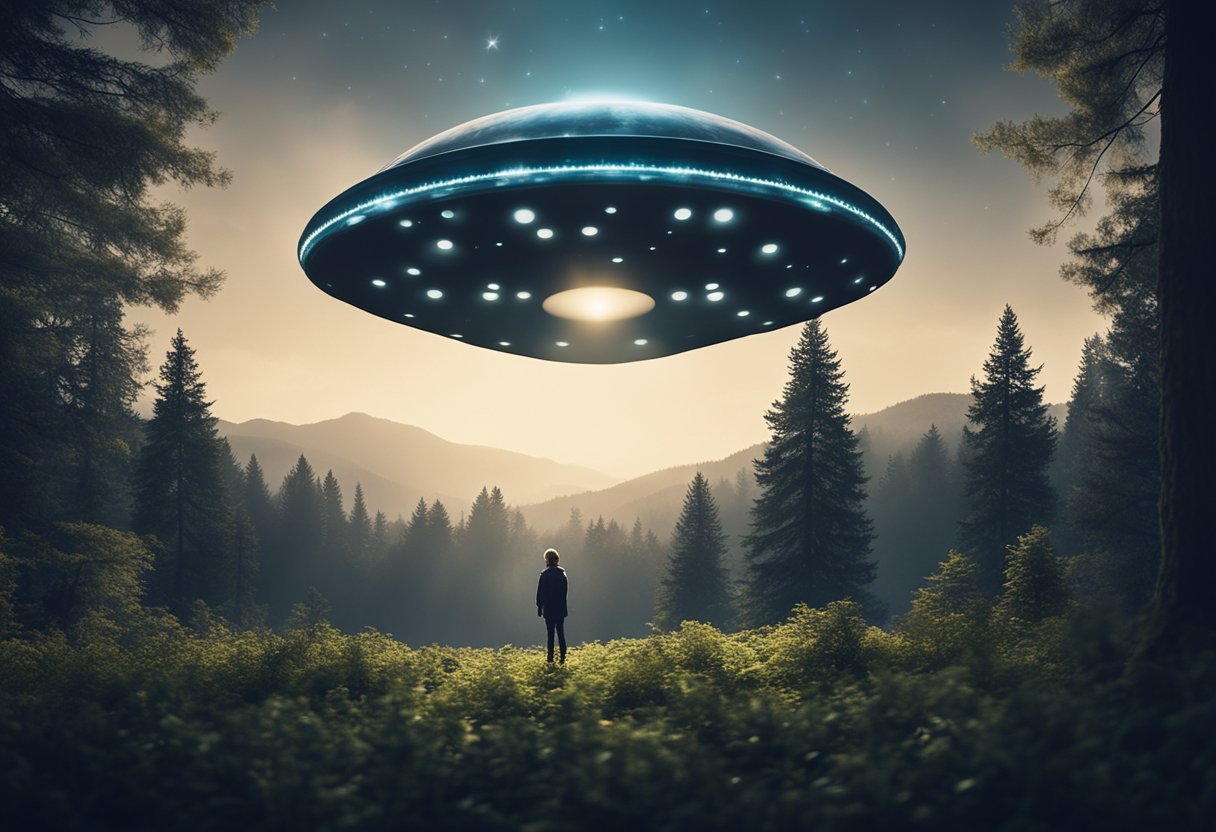
Examining the psychological elements that contribute to beliefs about fairies and UFOs involves exploring cognitive processes and societal influences. Cognitive factors focus on how individuals form these beliefs, while social influences consider how communities collectively embrace such ideas.
Cognitive Factors in Belief Formation
Belief in phenomena like UFOs and fairies often arises from deeply rooted psychological processes. People frequently interpret ambiguous events or stimuli through the lens of personal experiences and cultural conditioning. This can lead them to perceive ordinary occurrences as extraordinary. Cognitive biases, such as pattern recognition and the human tendency to assign meaning to randomness, play a role in belief formation.
Memory distortion and suggestion can further reinforce these beliefs. Under hypnosis or high-stress situations, individuals may recall abduction experiences or mystical encounters that align with existing narratives. Indirect suggestions during such states can shape how they interpret their memories, creating vivid accounts of interactions with extraterrestrial beings or magical creatures.
Social Influences on Collective Beliefs
Social dynamics significantly impact collective belief systems surrounding UFOs and fairies. Communities sharing these beliefs often create a supportive environment, where stories and experiences are exchanged and validated. Media portrayal plays a critical role by dramatizing and normalizing these narratives, contributing to their persistence.
In many cases, belief in extraterrestrial life or mystical entities is intertwined with cultural myths and folklore. This overlap enriches narratives and provides cohesive storylines that are easily adopted by community members. Moreover, societal acceptance and repetition of these stories can create a feedback loop, strengthening the shared belief in both ancient myths and modern alien theories.
Cultural Impact
The interplay between fairy folklore and UFO phenomena highlights how cultural narratives shape societal perceptions. Fairy beliefs persist in modern culture through literature and media, while unidentified flying objects often dominate headlines and cinema.
Fairy Beliefs in Contemporary Culture
Fairy tales continue to influence contemporary culture through various forms of media. Stories of fairies are prevalent in children’s literature, such as the beloved classics by authors like the Brothers Grimm. These tales often involve mysterious beings that, similar to historical accounts of fairies, appear in isolated, enchanted settings.
In modern cinema, films frequently depict fairies as mystical creatures possessing magical powers. This depiction reinforces traditional narratives, allowing fairy lore to remain relevant. Exploring the links between fairies and nature also highlights how these stories reflect societal values surrounding the environment. These cultural portrayals ensure the continued fascination with fairies in contemporary life.
UFOs and Modern Media
Unidentified flying objects have captured public imagination through films, books, and popular media. In the latter half of the 20th century, UFO sightings became a cultural phenomenon, often linked to speculation about alien life. Movies such as “Close Encounters of the Third Kind” and series like “The X-Files” illustrate society’s continued intrigue with extraterrestrial encounters.
Media often portrays UFOs as alien spacecraft, leading to a surge in public interest and curiosity. This portrayal shapes perceptions of UFO phenomena and influences discussions about potential life beyond Earth. Moreover, as unidentified aerial phenomena (UAP) are openly acknowledged by governmental organizations, media narratives evolve, ensuring that UFOs remain a dominant topic in cultural discourse.
Comparative Analysis
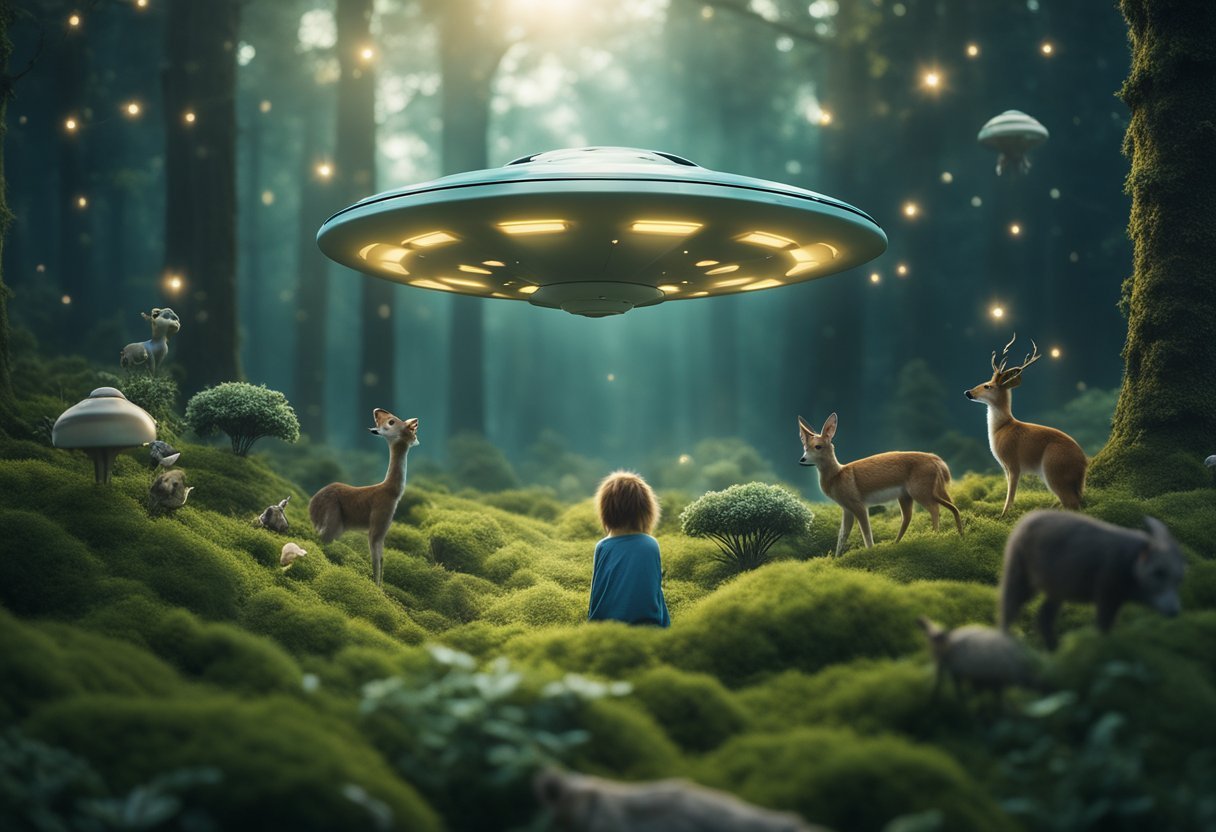
Fairies and extraterrestrial encounters share surprising parallels and significant differences. While both narratives involve mysterious beings, their portrayal and cultural impact diverge in notable ways.
Similarities in Fairy and UFO Encounters
Both fairy and UFO encounters feature mysterious entities that appear in isolated settings. Witnesses often describe fairies and aliens as having humanoid forms with unusual attributes. For fairies, this might include small stature and ethereal presence. UFO occupants are often depicted as having large eyes and thin bodies. These beings frequently communicate through telepathy or gestures.
Experiences often occur during transitional periods in people’s lives. Such narratives frequently involve missing time or strange dreams. The folklore surrounding fairies includes tales of abductions, where individuals are taken to an otherworldly realm, akin to alien abduction reports.
Both have evolved into cultural phenomena that provoke discussions about their significance. UFO sightings and fairy tales act as mirrors reflecting societal anxieties and aspirations. They capture the human fascination with the unknown and the desire to explain extraordinary occurrences beyond normal understanding.
Differences Between Fairy Tales and Alien Abduction Reports
Fairy tales typically originate from ancient folklore, deeply rooted in cultural traditions. They often portray fairies as magical creatures with ambiguous intentions. These stories served as moral lessons or explanations for natural events, emphasizing harmony with nature and the supernatural.
In contrast, UFO abduction reports stem from contemporary experiences and are presented with a scientific or investigative lens. Extraterrestrial encounters are frequently associated with advanced technology, spacecraft, and detailed descriptions of alien physiology.
Fairy tales often include fantastical elements like magic and enchanted artifacts, whereas UFO narratives focus on technology and evidence. Fairy interactions are often whimsical and based on oral tradition, while UFO stories are examined using electronic media and documentation, influencing the way these experiences are perceived in modern culture.
Scientific Investigations
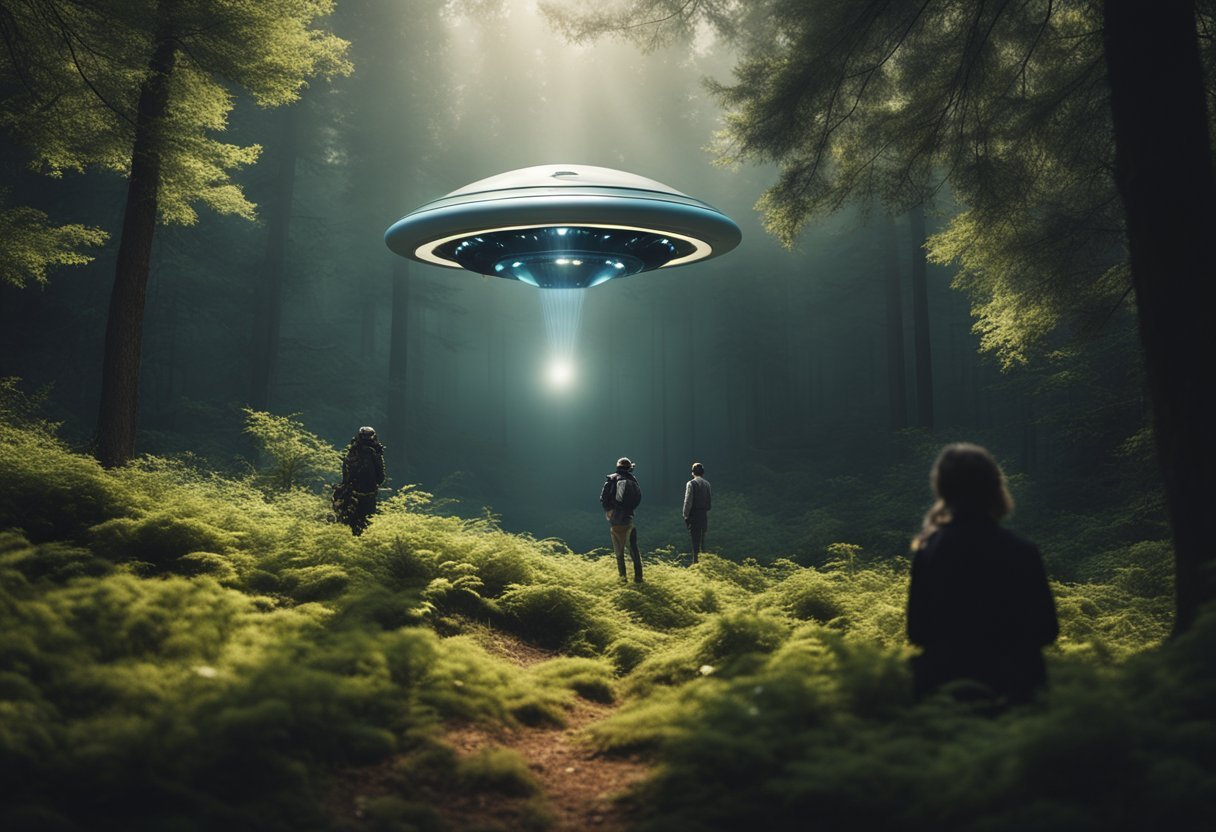
Exploring the links between the folklore of mythical creatures and modern UFO phenomena involves diverse scientific methodologies. Researchers focus on understanding both unidentified flying objects (UFOs) and traditional fairy myths to uncover any possible connections. Studies range from analyzing eyewitness accounts to examining cultural narratives.
Research on Unidentified Flying Objects
Researchers have long studied unidentified flying objects (UFOs) to understand potential extraterrestrial life. These studies incorporate various scientific techniques to analyze sightings, photographs, and radar data. The focus lies on validating reports through technological and human observation.
The term UAP (Unidentified Aerial Phenomena) is gaining preference in the scientific community, emphasizing the objective investigation. Researchers aim to differentiate between natural occurrences and possible evidence of extraterrestrial technology.
Linking UFOs to possible encounters with non-human life forms is speculative, but scientific inquiry remains active. Studies attempt to determine if these sightings possess consistent patterns or if they merely represent societal and psychological phenomena. These inquiries often collaborate with governmental and independent organizations for data collection and analysis.
Studies on Mythical Creatures and their Origins
Investigations into mythical creatures like fairies aim to explore their origins within cultural contexts. These beings often symbolize deeper human psychological and social narratives, rather than representing physical entities observed in UFO studies. The comparison between fairy tales and UFO accounts suggests an intersection of folklore with modern interpretations of unexplained experiences.
Cultural anthropologists and historians examine parallels between mythical creatures and modern UFO encounters. Stories often reflect societal anxieties or aspirations across different eras. The narrative similarities indicate an enduring human fascination with the unknown and the supernatural that transcend specific phenomena.
Researchers explore how societal shifts have transformed interpretations of mythical creatures into contemporary UFO beliefs. Folkloric studies provide valuable insights into understanding the persistence and evolution of these narratives over time. Interdisciplinary research continues to uncover how these ancient myths influence modern perceptions of mysterious atmospheric phenomena.
Interdisciplinary Perspectives
The intersection of fairy and UFO beliefs can be explored through various academic disciplines, including folklore, anthropology, astronomy, and the search for extraterrestrial intelligence. Scholars from these fields analyze themes like alien spacecraft and extraterrestrial life through a multidisciplinary lens.
Folklore and Anthropology
Folklore and anthropology offer insights into the development of UFO beliefs and their connection to traditional tales of supernatural beings. Stories of “fairy kidnappings” show similarities to modern accounts of alien abductions, highlighting the human propensity to interpret unknown phenomena through cultural narratives.
Examining these beliefs sheds light on how societies construct explanations for mysterious occurrences. Anthropologists analyze the social functions of such stories, exploring how they reflect shared anxieties or hopes. This approach underscores the symbolic role of alien and fairy tales, suggesting they may serve similar psychological and cultural functions.
The analysis shows that despite technological advances, interpretations of unknown phenomena often revert to familiar cultural motifs. Studies like the Journal of Anthropological Approaches to the Paranormal assert how folklore can adapt to contemporary contexts, merging with ideas about extraterrestrial life, revealing complex cultural and psychological dynamics.
Astronomy and Search for Extraterrestrial Intelligence
Astronomy and the search for extraterrestrial intelligence contribute to understanding UFO beliefs by exploring scientific possibilities of alien spacecraft and extraterrestrial life. Scientists utilize advanced technology to investigate unidentified aerial phenomena (UAP) and potential extraterrestrial signals, grounding the discourse in empirical evidence.
The discipline focuses on distinguishing between cultural myths and physical entities that could constitute alien life. Initiatives like the SETI program seek to identify credible evidence of extraterrestrial intelligence, challenging speculative narratives. This scientific approach can demystify aspects of the UFO phenomenon by providing grounded explanations for sightings and alleged encounters.
In assessing the overlap of fairy and UFO beliefs, the UFO contactee phenomena from a sociopsychological perspective offers a critical view, showing how scientific inquiry can illuminate the distinction between folklore and potential extraterrestrial encounters.
Implications and Conclusions
The intertwining of UFO beliefs and fairy folklore has intrigued researchers due to their similar narratives. Both phenomena often involve mysterious encounters with unknown entities, which some suggest might reflect deeper societal anxieties.
UFO Beliefs vs. Fairy Folklore:
- Historical Context: Fairies, traditionally seen in folklore, share themes with UFO narratives, such as abductions and mystical journeys.
- Cultural Influence: Stories of fairies once served as explanations for unexplainable events, similar to how extraterrestrial encounters are interpreted today.
Studies have highlighted that belief systems adapt over time, repurposing myths to fit contemporary contexts. The similarities between UFO occupants and fairy inhabitants suggest that human cognition is drawn to certain archetypes, indicating a psychological or cultural basis.
Psychosocial Implications:
- Community Formation: Both belief systems foster communities around shared experiences and narratives.
- Mental Health: Like traditional myths, UFO narratives can impact mental health, offering frameworks for understanding unusual experiences.
The continual adaptation of fairy tales into UFO stories reflects a desire to rationalize the unknown, as seen in sociopsychological perspectives. These narratives underscore human fascination with otherworldly phenomena, whether through ancient fairy folklore or modern tales of extraterrestrial visitations.
Understanding these parallels suggests a persistent human drive to explore the mystical and unknown.
Frequently Asked Questions
Historical accounts of fairy encounters exhibit striking similarities to modern UFO experiences. Cultural stories and psychological phenomena contribute to the myths surrounding both fairies and UFOs.
How have fairy mythologies influenced modern UFO narratives?
Fairy mythologies have contributed to modern UFO narratives through shared themes of mysterious entities appearing from other realms. These mythical creatures often share characteristics with contemporary alien descriptions, such as otherworldly powers and fantastical modes of travel. This influence is evident in narratives that depict UFO occupants resembling traditional fairies, enhancing their mystique.
What cultural factors contribute to the belief in both fairies and UFOs?
Cultural factors that foster belief in both fairies and UFOs include societal storytelling traditions and mythologizing of unexplained phenomena. Stories of fairies have long been part of folklore, depicting them as mystical beings with the ability to influence the human world. Similarly, UFO sightings often emerge from cultural narratives that seek explanations for unaccountable events.
Can encounters with fairies be compared to modern UFO sightings?
Encounters with fairies and modern UFO sightings share numerous similarities, such as experiences of being taken to unknown places and interactions with mysterious beings. These parallels suggest a continuity in how humans interpret and narrate encounters with unexplainable phenomena across time.
What psychological phenomena could explain the overlap between fairy and UFO experiences?
Psychological phenomena, such as sleep paralysis and cognitive biases, may explain the overlap between fairy and UFO experiences. These conditions can lead individuals to perceive and interpret encounters in ways that align with pre-existing cultural narratives, shaping their beliefs about mystical and extraterrestrial beings.
How do historical depictions of fairies relate to contemporary alien descriptions?
Historical depictions of fairies often describe them with features now attributed to aliens, such as small stature and supernatural abilities. These portrayals have laid a foundation for contemporary alien descriptions, where fairies’ magical qualities are mirrored in the perceived technological or metaphysical powers of aliens.
In what ways do fairy abductions in folklore resemble alien abduction reports?
Fairy abductions in folklore resemble alien abduction reports in aspects such as being taken against one’s will, undergoing mysterious experiences, and interacting with non-human entities. These narratives often include themes of time distortion and memory loss, which are frequently reported in both fairy and UFO abduction stories.

